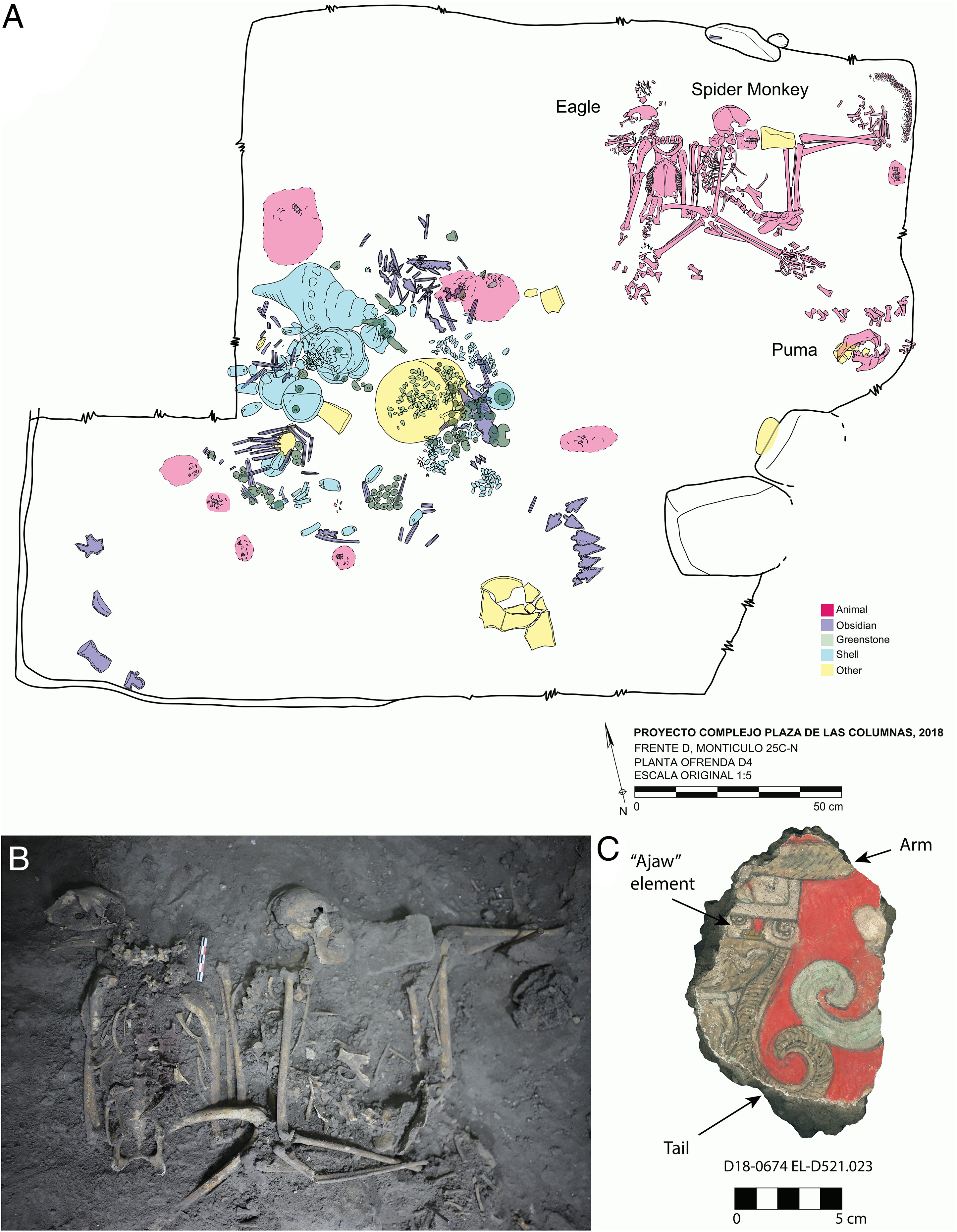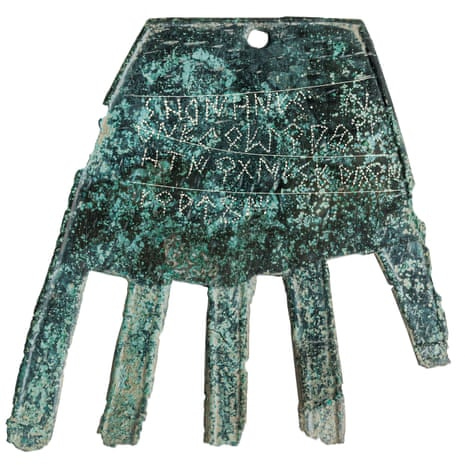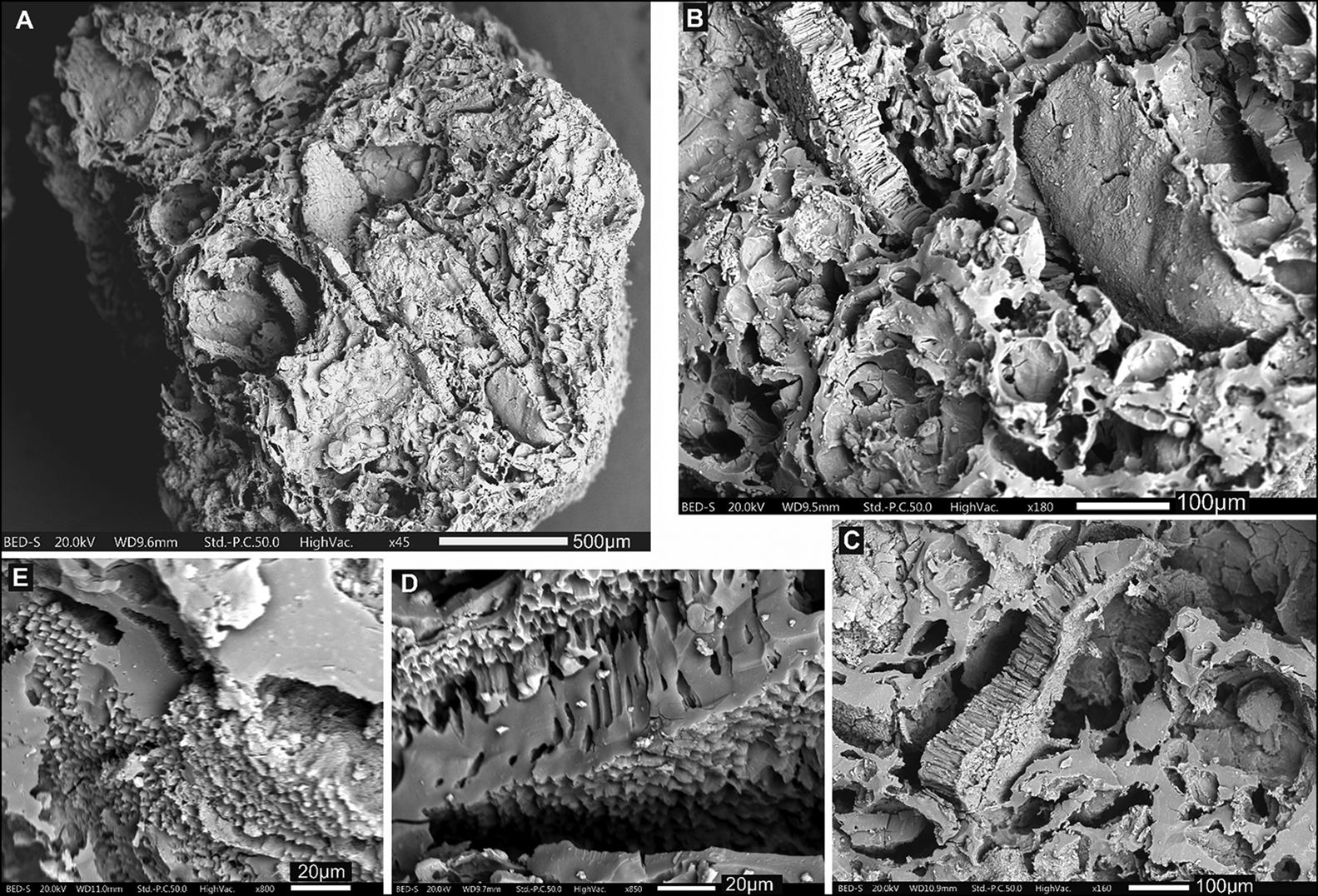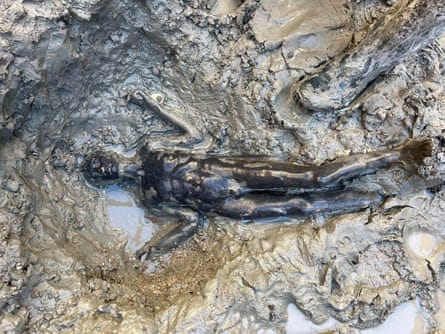From the original article on December 7, 2022. Author: Stone Age Herbalist.
Welcome to another monthly round-up of the most important and interesting archaeology for November. Two interesting papers on ancient cooking, from Mesopotamia to the Neanderthals, reveal two unexpected conclusions about meat and plants in the diet. A fascinating paper about a Mayan spider monkey sacrifice sits alongside Mesolithic grave analysis, Roman metalworking, Madagascan megafauna and Basque linguistics. Finally the announcement of an incredible discovery of Etruscan bronzes rounds out the news.
Finding Varus’ Legions: The 19th at Kalkriese
The mysteries surrounding the Battle of Teutoburg Forest in 9 AD, when Arminius ambushed the Roman armies, have slowly been unveiled in recent decades. Now we can add to the list a method for determining exactly which legion was where. Varus was in command of three - the 17th, 18th and 19th - and debates have been had over where each was destroyed. Annika Diekmann, research assistant in Bochum, has been able to create a unique metallurgical fingerprint for each legion, based on the non-ferrous metals they used for belts, brooches, buckles etc. These simple brass and bronze objects were recycled and re-used by the smiths of the legion, which created the conditions for differing trace elements to become incorporated into the metals. By carefully demonstrating the differences between the three legions, Diekmann was able to prove the 19th was present at Kalkriese and was annihilated during the battle.
Fur & Feathers: A Mesolithic Burial in Finland
One of the classic problems of archaeological excavations is preservation - under what conditions do human bone, organic objects or fragile materials survive? Acidity is an important factor; it favours the survival of certain things whilst degrading others. At a burial site in Majoonsuo, eastern Finland, the low pH of the soil provided researchers with an opportunity to recover some intriguing microscopic remains, even if it helped destroy the bones of the individual.
Based on the remaining teeth (seven fragments), the age of the person was estimated between 3.5-10.5 years old. Along with some quartz arrowheads, the major feature was an excess of red ochre, a material I’ve covered in more detail here. A small hearth with animal bones and stone tools was found close by. The bones give a radiocarbon date of 7521–7337 calBC, but the grave itself could not be dated using that method. However, to provide more details the team took soil samples from the grave to look for microparticles. They were able to identify 24 bird feather barbules, seven from a waterfowl bird and one potentially from a falcon. Other feather fragments and hairs from a dog and some from an unknown carnivore were also identified. Bast fibers, fatty acids, charred wood and phytoliths were also found, potentially revealing cordage or plant fibre textiles/materials.
It is impossible to conclude exactly what was happening here but based on nearby graves in Russia and the Baltics, there is a good chance the grave was lined with feather down and the body wrapped in some kind of soft container (bark, bast, skins etc). A dog in the grave, or clothes made with dog fur are certainly possible, as are arrows fletched with falcon feathers. Either way, this gives us some invaluable information about eastern Mesolithic burial practices and a good example of why soil sampling is so useful, even when macro evidence is lacking.
The cryptic city-state of Teotihuacan was a legendary place for the Aztecs, and for archaeologists it continues to throw up surprises. This month an extraordinary paper was published which demonstrated the power of combining multiple scientific methods to the discovery of a female spider monkey. At its height (1-500 AD), Teotihuacan had noted diplomatic relations with the Mayan civilisation. In an excavation of a major ceremonial centre, researchers uncovered a fascinating array of bones and objects:
The complete skeleton of a spider monkey was found in Offering D4, deep in the fill of Mound 25C, one of three major pyramids (Fig. 1B, star). The dedicatory cache was placed next to an early structure that was destroyed in order to construct the pyramid over it and stratigraphically predates the aforementioned feasting event and mural deposit. Fine greenstone figurines and adornments (some sourced as jade from the Motagua Valley, Guatemala) (14), copious shell/snail artifacts, and a lavish quantity of quality obsidian goods (blades, projectile points, and eccentrics) were distributed throughout the cache (Fig. 2A). A complete golden eagle (Aquila chrysaetos) was sacrificed next to the spider monkey (Fig. 2B). A puma skull (Puma concolor), various rattlesnakes (Crotalus sp., minimum number of indivdiuals = 9), and a few unidentified small birds were also uncovered. As the craftmanship of these artifacts is comparable to dedicatory offerings from the Sun, Moon, and Feathered Serpent Pyramids (15–17), this collection was likewise assembled at the direction of the highest levels of the Teotihuacan state.

The monkey dates to between 250 to 300 AD and was estimated to be a young female. She had been bound, with her hands and feet tied. Studies of her collagen, bones, teeth, enamel and comparisons with wild spider monkeys indicate she was raised on a captive diet of maize, prickly pear and some unusual additions of chili peppers and arrowroot. Unusual wear patterns on the teeth, along with wood fragments in the mouth suggest she was restrained with some kind of wooden object, probably to prevent her from biting. Oxygen and strontium isotopes point to her early life being in a warmer, wetter environment, before shifting to a more arid area, likely reflecting her capture in the wild.
Combining all this together, along with previous studies of Mayan contact with Teotihuacan, the researchers posit that the monkey was deliberately raised as a sacrificial animal, brought to the city and killed along with other exotic creatures in an elaborate ceremony.
Origins of the Basque Language
Basque has always fascinated historians and students of European languages for its isolate status and unknown origins. The Iron Age Vascones tribe are considered to be proto-Basque speakers, but until now they were assumed to be illiterate. A bronze hand excavated near Pamplona has revealed inscriptions in proto-Basque, which has forced historians and linguists to revise the timescale for Basque literacy.
Until now, scholars had supposed the Vascones had no proper written language – save for words found on coins – and only began writing after the Romans introduced the Latin alphabet. But the five words written in 40 characters identified as Vasconic, suggest otherwise.
The first – and only word – to be identified so far is sorioneku, a forerunner of the modern Basque word zorioneko, meaning good luck or good omen.
Javier Velaza, a professor of Latin philology at the University of Barcelona and one of the experts who deciphered the hand, said the discovery had finally confirmed the existence of a written Vasconic language.
“People spoke the language of the Vascones in the area where the inscriptions were found,” he said.
“We had imagined that to be the case but until now, we had hardly any texts to bear that out. Now we do – and we also know that the Vascones used writing to set down their language … This inscription is incontrovertible; the first word of the text is patently a word that’s found in modern Basque.”

Madagascan Megafauna & Colonisation
The arrival of humans on Madagascar was one of the final migrations that completed the human takeover of the world’s landmasses, with the exception of smaller islands in the Pacific and New Zealand. The exact timing and origins of the earliest voyagers is still shrouded in mystery, with legendary pygmies apparently occupying the island by the time the Austronesians arrived. It is still startling that it was Neolithic seafarers from across the Indian Ocean who got their first, rather than any of the African populations from nearby shores, but certainly we know from history and genetics that Bantu Africans were eventually brought to Madagascar as slaves.
This study from the University of Toulouse adds to this picture with a large modern genetics study, taken from 700 currently living individuals on Madagascar, and combined with over 3,500 existing genomes to produce a clear picture of when different populations mixed with one another. The results demonstrate that modern Malagasy populations are derived from southern Borneo-Austroneasians, who underwent a heavy selection pressure between 1000-2000 years ago. This likely represents the bottleneck of the migrating population who left Asia and travelled to Madagascar, although it doesn’t follow that they necessarily colonised Madagascar first. Then around 1000 AD this small population mixed with African Bantus and expanded, both in terms of size and territory.
the African alleles on chromosome 1 were strongly selected for, probably because of the protection against vivax malaria conferred by the Duffy null allele. The selection signal observed is one of the strongest detected in any human population, suggesting that malaria was a heavy burden for the colonizing Asian ancestral population. But beyond genes, the demographic expansion might also be due to the interchanges of cultural practices between populations of Asian and African origins
This addition of African derived malarial protection and horticultural/pastoral expertise provided the small Austronesian population with the biological and cultural tools to then expand into Madagascar in a way not seen before. The timing of this genetic admixture aligns with the almost total extinction of Madagascar’s native megafauna. Megafaunal extinction and its causes are a hotly debated topic, but in this case at least it seems irrefutable that human activity led to their demise.
Determining exactly what certain styles of pottery were used for has vexed archaeologists for centuries. Looking at context, production methods, ethnographic parallels and so on can provide some idea, but we have better weapons in our arsenal now. This study from Glasgow takes aim at the so-called Beveled Rim Bowls of the Mesopotamian Copper Age. These rough, hand made bowls are found in their thousands at 4th millennium BC sites across southern Iraq and the Persian Gulf as well as eastern Turkey and Iran. Archaeologists link the expansion of this type of ceramic dish to the growing state powers of the Near and Middle East, seeing in them a kind of ‘Iron Bread Bowl’ for staples of cereal rations. In fact, when the pottery was tested by the research team, they found nothing of the kind.
The dishes actually revealed strong biochemical signals for animal fats and meat, but without any accompanying signs of cooking. This led the researchers to conclude the Beveled Bowls were serving dishes for meat and marrow stews, rather than for cereals or breads. Also present were smaller signals for dairy and seeds or some other plant food.
If this interpretation is correct, BRBs at Shakhi Kora, rather than containing breads or cereal-based rations, which would have been of comparatively low cost to produce and distribute to large numbers of consumers, contained meals produced at potentially greater economic expense… The broths or stews based on, or flavoured with, bone and marrow in the BRBs present the careful extraction of all available calories from slaughtered animals rather than the festive cuts of meat one would expect to be served at special social occasions.
Yet again we see older interpretations being challenged by more scientific based methods of analysis. The next step for future archaeology is working with the context and chronological evidence alongside the scientific, to create a more rigorous narrative about the emergence of the state.
A Palaeolithic ‘Beyond Burger’?
Plant foods in early human prehistory are hard to find, difficult to identify and are often overlooked for the more obvious dietary evidence for hunting large animals. Yet we are seeing paper after paper in the last few decades showing that even the most carnivorous hominins, like Neanderthals, also varied their diet with plants, roots, fruits, seeds and nuts.
This paper published in Cambridge Univerisity Press, offers some of the best evidence to date not only for plant consumption in the Palaeolithic, but also the cooking methods and taste preferences of the people at the time. Microscopic cooked remains of food from two sites - Franchthi Cave in the Aegean Basin and Shanidar Cave in the north-west Zagros Mountains - were carefully analysed to pinpoint what foods were being cooked and how. Both caves are well known for their deep and continuous use over time, with Neanderthals, Upper Palaeolithic humans, Mesolithic foragers and later Neolithic occupants all present. The food remains span these time ranges, from 70kya to 9,000 BC, giving us an imprecise but wide snapshot of cooking and consumption methods.
The charred foods from Franchthi Cave give us a sort of lump of pulses set within a gelatinised matrix, which suggests seeds were being soaked and mashed or pounded. The species were identified as bitter vetch, wild lentil and peas.

Food remains from Franchthi Cave showing pulse seed coat fragments
A fourth ‘lump’ from Franchthi turned out to be some kind of heated starch mash, probably from wild grasses or possibly nuts:
This structure strongly resembles experimental preparations and archaeobotanical examples of charred bread-like foods or finely ground cereal meals, such as those reported from various Neolithic and later prehistoric settlements
Similarly the Shanidar Cave results point towards the use of wild pulses, lentils, peas and grasses, again soaked and mashed. What particularly interested the researchers though, was the presence of both soaking methods but the retention of the pulse seed coat. They have interpreted this as a deliberate choice to make the resulting food palatable, but more bitter than was necessary. They discuss the food choices people are known to make across the world where bitterness was prized and foods carefully prepared to make them astringent. This paper now adds to the growing evidence for Palaeolithic hunter-gatherers relying in part on plant foods, perhaps in a medicinal capacity or to provide much craved starches and alternative flavours to a meat rich diet.
Exceptional Etruscan Bronze Statue Discovery
Excavations in Tuscany, at an ancient spa in San Casciano dei Bagni, near Siena, have turned up an astonishing number of perfectly preserved Etruscan bronzes. 24 partially submerged statues, including “a sleeping ephebe lying next to Hygeia, the goddess of health, with a snake wrapped around her arm…Close to the ephebe (an adolescent male, typically 17-18 years old) and Hygeia was a statue of Apollo and a host of others representing matrons, children and emperors.”
The natural hot springs were built upon around 300 BC, adding altars, baths, fountains and wells. Many thousands of votive coins were also uncovered in the mineral-rich mud. The statues were likely deposited for luck, health or fertility. These finds have been compared to the Riace Bronzes for importance, and many textbooks will be updated in the coming years as they are analysed.
Massimo Osanna, the director general of museums at the Italian culture ministry, said the relics were the most significant discovery of their kind since two full-size Greek bronzes of naked bearded warriors were found off the Calabrian coast near Riace in 1972. “It is certainly one of the most significant discoveries of bronzes in the history of the ancient Mediterranean,” Osanna told the Italian news agency Ansa.

Library of Chadnet | wiki.chadnet.org